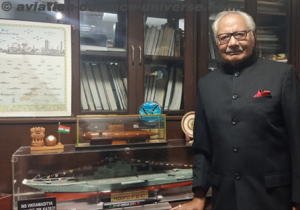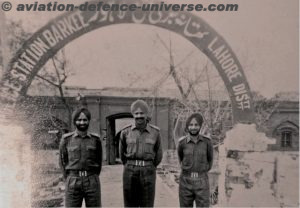
By Maj Gen (Dr.) Ashok Kumar, VSM (Retired)
New Delhi. 23 September 2022. India gained independence on 15th August 1947 wherein British India was bifurcated in India and Pakistan. Not only this, Pakistan emerged in two parts – West Pakistan and East Pakistan flanking large Indian mass from two sides. The independence was given by an act of British Parliament which was given royal assent on 18th July 1947. This act necessitated formation of two dominions – India and Pakistan whose boundary was hurriedly drawn as Radcliffe Line. There were more than 500 princely states which were to be integrated. While large number of princely states opted to join India or Pakistan based on geographical contiguity and other related factors, some of the princely states attempted to remain independent contrary to constitutional provision. In addition, some of them delayed the decision by attempting to sign ‘standstill agreements’.

Pakistan attempted to exploit this situation as Maharaja Hari Singh of J&K princely state had neither joined India nor Pakistan on 15th August 1947. While India was busy integrating other princely states, Pakistan attacked J&K to capture the state by force. Once Pakistan made sizable progress in the state of J&K, Maharaja Hari Singh signed instrument of accession to merge with India on 26th October 1947. It was after this that India intervened militarily pushing back Pakistani militias and Pakistani regular army personnel. Before the entire state of J&K was liberated, ‘cease fire’ was declared wherein close to 1/3rd territory remained with Pakistan despite being in violation of instrument of accession signed in favour of India. Indian forces fought aggressively but India as a nation remained defensive wherein it did not use air force in offensive manner to fast track the outcome of the conflict. Not only this, it also fought only in J&K and did not expand the conflict areas beyond J&K, another confirmation of its defensive war fighting. Not only this, it accepted the ‘cease fire’ before achieving either its military or national aim.
As Indian defense forces started getting evolved after independence, though not being predominant consideration in the national agenda, it suffered substantially in 1962 war with China. While outcome of 1962 war is one issue but the preparation for war fighting and equipping for the high altitude areas was also not addressed adequately. The quantum of army deployed was also not in full besides no offensive use of Indian air force despite suffering huge losses both militarily as well as territorially.
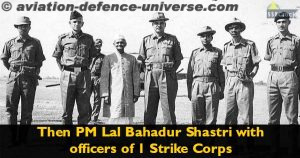
With outcome of 1962 war, Indian defense forces commenced re-organization and re-equipping. Pakistan on the other hand, handed over Sakshgam Valley to China in 1963 despite J&K being Indian part. Pakistan also got substantial support from USA to equip its defense forces, so much so that it gained qualitative edge over India in air power as well as in armoured vehicles, though marginally inferior numerically. Pakistan wanted to make another attempt militarily to take J&K in its fold. It therefore launched military operations in 1965 as it wanted to exploit the weakened position of India in 1962 war and wanted to launch this operation before Indian defense forces are fully re-organized and re-equipped.
In 1965 war, though initial skirmishes commenced in Rann of kutch in the beginning of 1965, the real war from Pakistan was fought in the state of J&K. Operation Gibralter was launched by Pakistan by inserting its forced in the state of J&K. It never hoped that India of 1947-1948 having gone through the defeat of 1962 has changed much strategically. The country, India, which was strategically defensive during close to two decades after its independence met its watershed moment in 1965 and everything changed during this war. As we are nearing its 57th anniversary on coming 23rd September 2022, lot will be written and analyzed including why did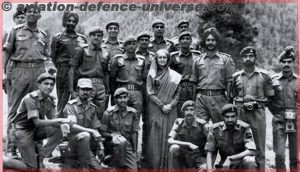 we hand over hard won territories including Haji Pir Pass during 1966 Tashkent agreement. The most important take away of 1965 Indo-Pak war was, however, declaration of Indian arrival on the war fighting scene not only in the subcontinent, but to the world as well.
we hand over hard won territories including Haji Pir Pass during 1966 Tashkent agreement. The most important take away of 1965 Indo-Pak war was, however, declaration of Indian arrival on the war fighting scene not only in the subcontinent, but to the world as well.
While some analysts classified this war as a stalemate but the following tenets of war fighting proved that this war was the watershed moment for the Indian defense forces wherein it transited from the defensive mindset to offensive mindset:
- Despite delimitation of CFL after 1947-48 war in J&K, Indian crossed CFL on 15th August, 65. As against fighting Pakistani infiltrators in J&K who had crossed in a big way in J&K on 5th August 65, India took the battle in POK including capture of strategically located Haji Pir Pass.
- India not only limited its offensive in the state of J&K but crossed even IB on 6th September 65, taking the war fighting in Pak Punjab. This was an unprecedented act and was possible only by the defense forces who had adopted the strategic offensive intent.
- While India did not use air power offensively in 1947-48 as well as 1962 war, it did not shy from using air power during 1965 war. It demonstrated national and military resolve to use entire national power in furthering the national interest in this war.
- It also proved that it is man behind the machine which matters the most. Despite Pakistan having the qualitative edge both in air power as well as armoured components, motivated Indian soldiers dented this edge by their superior skill sets and military resolve.
- Though much use of navy was not done as Indian deliberately planned to limit the conflict to the land borders but a tri-services integrated approach emerged during 1965 war which became decisive in 1971 war with Pakistan resulting in liberation of Bangladesh and dismemberment of Pakistan. Seeds of this victory were sown in the war of 1965 wherein nation transited to strategic state craft in the employment of the defense forces.
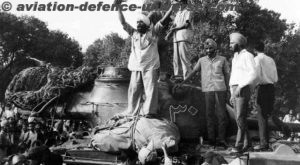
India has never looked back since 1965. Having traversed this watershed moment in 1965, it gave a beating to the Chinese in 1967 during Nathula-Chola skirmishes. Moving ahead in 1971, it created unparalleled win in the world history having liberated a nation, having dismembered its prime adversary Pakistan and capturing 93,000 soldiers as POW. India continued with its offensive strategic intent thereafter as well having captured Siachen in 1984 and negating Chinese moves in 1987 in general area Samdurong Chu. Not only this, India defeated Pakistan during 1999 Kargil conflict despite self imposed restriction of not crossing the LOC as the country, which was considering itself as a suitable candidate for permanent membership of the security council, wanted to act responsibly with maturity.
As we move ahead and reach the timeline of LAC standoff with China in April-May 2020, India captured the Kailash range, a victory which was not only surprising for China but to the world as well. The transition of Indian defense forces achieved in 1965 appears to have reached its full manifestation now and it is due to this very reason, 1965 war becomes the most important watershed moment for the Indian defense forces.
(Maj Gen Ashok Kumar, VSM (Retd) is a Kargil war veteran and defence analyst. He is visiting fellow of CLAWS and specialises on neighbouring countries with special focus on China. The views in the article are solely the author’s. He can be contacted at editor.adu@gmail.com).




































